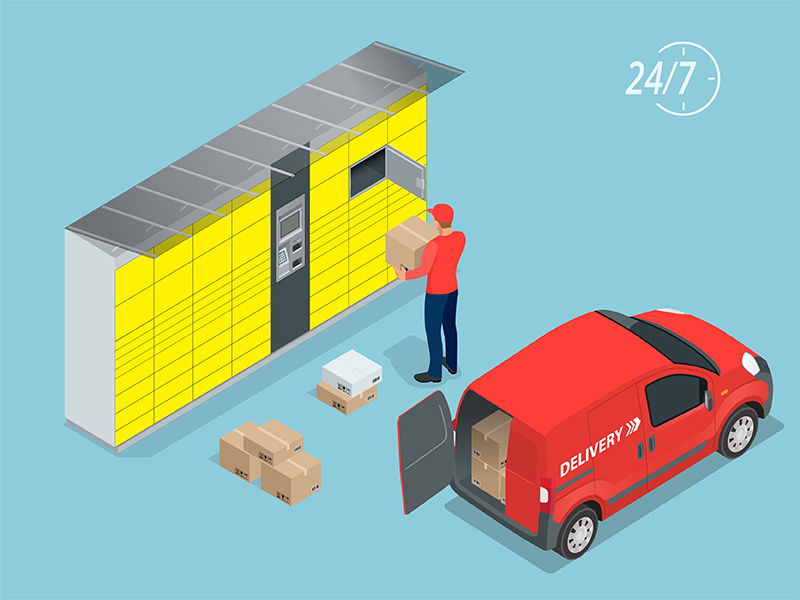Apartment property managers have witnessed the surge of e-commerce firsthand: with an overwhelming deluge of packages delivered to their residents. In the spring 2016 issue of Development magazine, Ron Derven explained how each package resulted in 10 minutes of lost productivity for a property manager as they had to sign for it, find a place to store it and then notify the resident. As package shipments continue to grow, the volume of packages are not only affecting management teams’ time but property storage constraints. The package problem had become so cumbersome for Camden Property Trust that in 2015 they stopped accepting deliveries for residents in all of its 169 U.S. apartment buildings.
In an effort to tackle this problem, Amazon recently entered into agreements with the largest apartment owners to install locker systems in multifamily rental properties across the U.S. The locker service, titled The Hub, will allow tenants to receive packages in a secure location and pick them up on a 24/7 basis. The Hub promises to free up property management staff time, accepts packages from all carriers, serves as an amenity to tenants, and offers lockers that can be placed in- or outdoors. Upon receiving a package, the tenant is notified via text or email and provided a one-time locker access code. Apartment owners pay about $10,000 to $20,000 to purchase the lockers without a monthly fee. For now, the owners using The Hub system are absorbing the cost and not planning on charging tenants to use the system.
Amazon’s sympathies are not solely with the apartment owners. The Hub will give Amazon more control of last-mile delivery — a costly part of its logistic chain. Having a central delivery destination for packages in a building will cut down on the time it takes for the carrier to drop off the packages and protect against theft and loss. Additionally, lockers ensure that packages will not be redirected to parcel depots and the carrier does not have to make multiple attempts at delivery. Other companies, such as Package Concierge and Luxer One, are competing for locker turf in apartments but are finding it difficult to meet Amazon’s pricing strategy.
Lockers may become more widespread in U.S. multifamily buildings as shipping volume is projected to grow by 20 percent in 2018 and e-commerce will comprise 17 percent of all U.S retail sales by 2022. Amazon does not yet have plans to install lockers in other types of residential or office buildings, although approximately 40 percent of the U.S. parcel market is comprised of business shipping.
Lockers could also be part of a range of access options as carriers may soon have the option to deliver directly into customers’ homes. Walmart and Amazon are piloting programs that allow delivery drivers to drop off goods in residences that are monitored by smart-home security systems. These types of solutions may ease the burden of package delivery but the commercial real estate industry will need to continue develop innovative solutions that respond to the demands of e-commerce.














